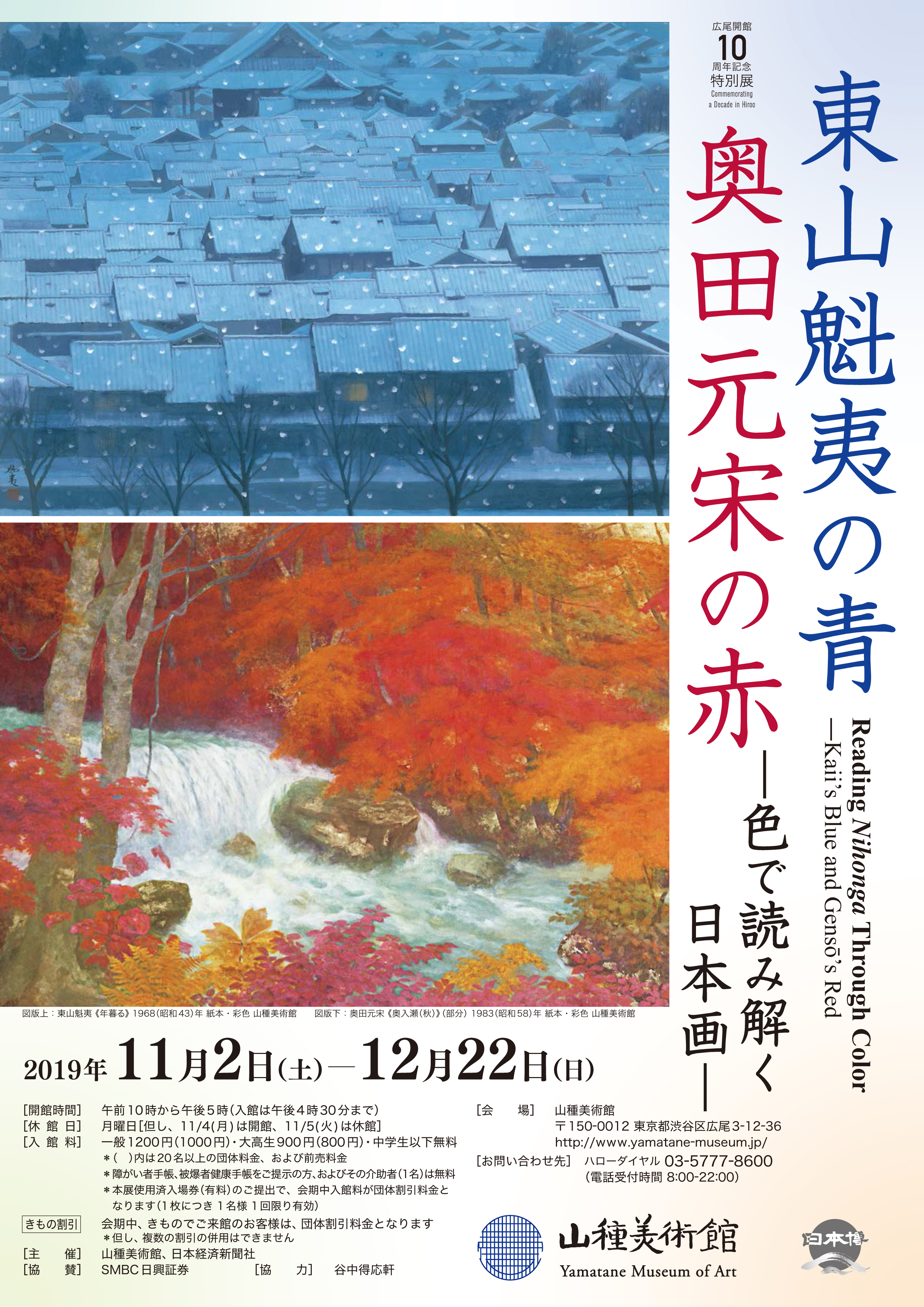Past Exhibition
Special Exhibition Commemorating a Decade since the Yamatane Museum of Art Opened in Hiroo:
Reading Nihonga Through Color
― Kaii’s Blue and Gensō’s Red

2 November (Sat.) – 22 December (Sun.) 2019
(Closed on 5 November, from 23 December to 2 January, and on Mondays, except for 4 November.)
Hours:10 am - 5 pm (Last admission at 4:30 pm)
Admission Fees: Adults: 1,200 [1,000] yen; university and high school students: 900 [800] yen; middle school and younger children: free of charge
*Figures in brackets are for groups of 20 or more, advance tickets, repeaters with used tickets, those who are wearing kimono.
*Disability ID holders and one person accompanying them are admitted free of charge.
Organized by: Yamatane Museum of Art and Nikkei Inc.
Sponsored by: SMBC Nikko Securities Inc.
With the cooperation from: Yanaka Tokuouken
Approximately 50 works in total are to be displayed.
Exhibition Overview
Kaii’s Blue and Gensō’s Red―certain colors are so closely tied to specific artists that they become almost synonymous. The colors in a painting have the critical role of communicating the image of the work and the artist’s world view. Inspired by that perception, Yamatane Museum of Art is holding an exhibition of works of modern and contemporary Nihonga with a striking use of color, to explore the close relationship between the painter and color.
The traditional paints used in Japanese art were mainly made from natural materials, including minerals and shells: gunjō ultramarine from azurite, white from gofun made from pulverized seashells, for example. The number of colors that could be presented was thus limited. In modern times, however, the introduction of a variety of artificial pigments and the development of paints using new man-made mineral pigments caused the colors available to multiply.
That increasing breadth of painting materials stimulated artists in Japan, helping spur a diversification in styles. Among painters, some experimented with working with newly developed or imported synthetic paints and Western color theory. Others viewed expressing color in the traditional manner, using mainly natural mineral pigment-based paints, as true to the spirit of Nihonga. As each sought the possibilities of color in ways distinctive to Nihonga, they created a diverse body of work.
Kaii’s End of the Year, presenting a tranquil scene of Kyoto in falling snow in blue and Gensō’s Oirase Ravine: Autumn, the autumn foliage in red, are joined by about fifty other paintings by Nihonga artists, including Takeuchi Seihō and Okumura Togyū, who used color effectively. How did they make use of color in their work as they established their own art? This exhibition introduces the artists’ own words and examines their social contexts to follow the paths they took, as revealed through color.
 Shibata Zeshin, Zhong Kui |
 Miyasako Masaaki, Fireworks into the Water: Spiral |
 Takeuchi Seihō, Ducklings |
 Yamaguchi Hōshun, On the Table ⓒ公益財団法人 JR東海生涯学習財団 |
 Senju Hiroshi, Study for the Shofuso Fusumae |
 Okumura Togyū, Maiko, Apprentice Geisha |
 Kobayashi Kokei, Autumn Fruit |
 Tabuchi Toshio, Embanked Village |
All works are the property of the Yamatane Museum of Art






